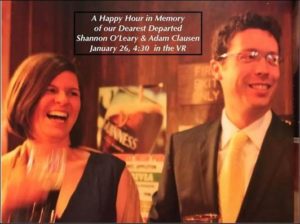The Office of Development is delighted to announce that Lawrence has reached another milestone in the Full Speed to Full Need (FSFN) campaign: FSFN gifts and pledges now total $67.9 million!
By surpassing the $65 million mark by Dec. 14, we qualified for the final $2.5 million of the anonymous donor’s $30 million match!
These gifts are making a real difference in the lives of Lawrentians. Because of our donors’ generous investments in endowed scholarships:
-
This year, we were able to provide the full demonstrated need for 102 students who otherwise would have had to cover a gap in their financial aid package.
-
The average dollar gap has decreased by 20 percent, making Lawrence more affordable.
-
Persistence toward graduation has significantly increased due to this effort as well as improved mentoring and academic support. The one-year retention rate for all new first-time first-year students from the 2015 cohort is 91 percent—the highest it has been since 2001!
We are grateful to our supporters for helping our students and continuing the tradition of liberal arts excellence at Lawrence.


